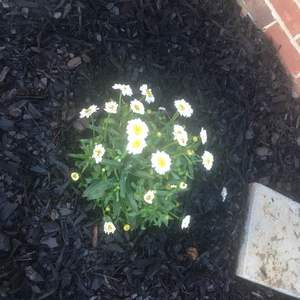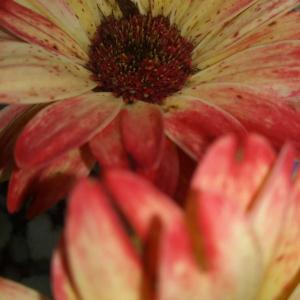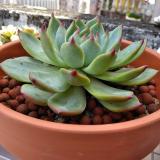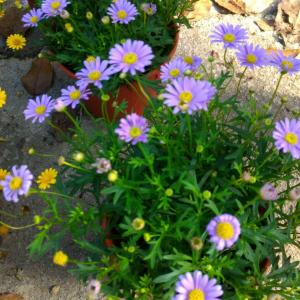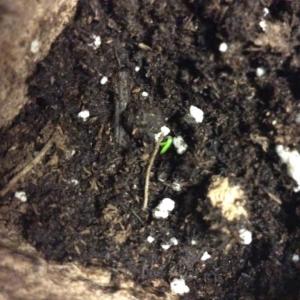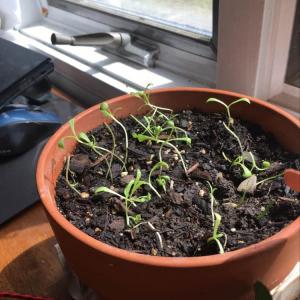Finncarter
2018年05月13日

Lithops Olivecea, know as the living stone has annual (white daisy) likd flowers - for up to 3 weeks. These slow growing succulents produce lovley patterns on the top. they need to be watered every 4-6 weeks. @GFinger #Lithops ##Pattern ##Livingstones #Daisy
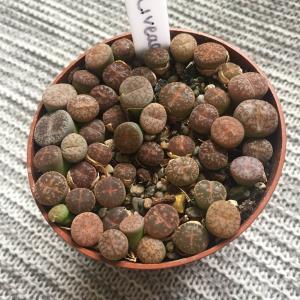

1
0
文章
Dummer. ゛☀
2017年10月08日

If you're looking for a perennial with a long season of bloom, blanket flower (Gaillardia x grandiflora) is a great choice. The daisy-like flowers are produced from early summer to early fall in shades of orange, red and yellow, adding sizzle to the garden and attracting nectar-seeking butterflies.
About blanket flowers
Produced above a clump of hairy, narrow, gray-green leaves, the blossoms of perennial blanket flower have petals that may be solid colored shades of yellow, wine red , orange or peach, or may be banded in combinations of red or orange with yellow. The petals of some are frilled, while others have a unique, tubular shape. Sizes range from 10-12 inch high dwarfs to selections as tall as 24-30 inches. All are easy care plants with few insect or disease problems and most are hardy in zones 3-9.
There is also an annual blanket flower (Gaillardia pulchella) that is easy to grow from seed. Start seeds early indoors 4-6 weeks before the last spring frost, transplanting to the garden when the weather has warmed. In warm-winter areas, sow seeds directly in late fall or very early spring. Varieties are available with single, double and semi-double flowers.

Special features of blanket flowers
Besides attracting butterflies, blanket flowers can be grown in containers and the taller cultivars make nice cut flowers. Here are some popular cutivars of the perennial Gaillardia x grandiflora:
Gaillardia 'Ariziona Sun' This 8-10 inch high variety sports masses of bright orange-red blossoms tipped with yellow on a dwarf plant.
Gaillardia 'Fanfare' Unusual, trumpet-shaped petals of deep red tipped with yellow on a 14 inch high plant surround a burnt orange center.
Gaillardia 'Tokajer' With marmalade-orange flowers that shade subtly to peach at the tips, this 2 foot tall variety may need staking.
Gaillardia 'Burgundy' As its name suggests, this variety bears large, 3 inch wide wine-red blossoms on a 24-30 inch tall plant.
Gaillardia 'Oranges and Lemons' This variety offers softer colors than other blanket flowers, with peach-colored, yellow-tipped blossoms with gold central cones on a 2 foot tall plant. Hardy in zones 5-9.
Choosing a site to grow blanket flowers
Full sun and very well-drained soil are musts for blanket flowers to thrive. They prefer loose, sandy soil that isn't overly fertile with a pH near neutral or slightly alkaline. Established plants are quite drought tolerant.

Planting Instructions
Container grown plants can be set out throughout the growing season, but spring or fall planting is ideal. Space dwarf cultivars about a foot apart; taller varieties should be set about 18 inches apart. Prepare the garden bed by using a garden fork or tiller to loosen the soil to a depth of 12 to 15 inches, then mix in a 2- to 4-inch layer of compost. Dig a hole twice the diameter of the pot the plant is in. Carefully remove the plant from its container and place it in the hole so the top of the root ball is level with the soil surface. Carefully fill in around the root ball and firm the soil gently. Water thoroughly.

Ongoing Care
Deadhead plants regularly to encourage more flowering. Blanket flowers are often relatively short-lived. Cutting back clumps to 6 inches in late summer often increases their chances of winter survival. You can also keep your plants vigorous by dividing them every 2-3 years in spring or early fall. Water newly set out or divided plants regularly until they become established. Blanket flowers have few insect or disease problems. Watch for aphids and leafhoppers that can spread a virus-like disease called aster yellows. Control insects with insecticidal soap, if needed, and destroy any plants that are stunted with flowers that remain green, as these are infected with aster yellows.
About blanket flowers
Produced above a clump of hairy, narrow, gray-green leaves, the blossoms of perennial blanket flower have petals that may be solid colored shades of yellow, wine red , orange or peach, or may be banded in combinations of red or orange with yellow. The petals of some are frilled, while others have a unique, tubular shape. Sizes range from 10-12 inch high dwarfs to selections as tall as 24-30 inches. All are easy care plants with few insect or disease problems and most are hardy in zones 3-9.
There is also an annual blanket flower (Gaillardia pulchella) that is easy to grow from seed. Start seeds early indoors 4-6 weeks before the last spring frost, transplanting to the garden when the weather has warmed. In warm-winter areas, sow seeds directly in late fall or very early spring. Varieties are available with single, double and semi-double flowers.

Special features of blanket flowers
Besides attracting butterflies, blanket flowers can be grown in containers and the taller cultivars make nice cut flowers. Here are some popular cutivars of the perennial Gaillardia x grandiflora:
Gaillardia 'Ariziona Sun' This 8-10 inch high variety sports masses of bright orange-red blossoms tipped with yellow on a dwarf plant.
Gaillardia 'Fanfare' Unusual, trumpet-shaped petals of deep red tipped with yellow on a 14 inch high plant surround a burnt orange center.
Gaillardia 'Tokajer' With marmalade-orange flowers that shade subtly to peach at the tips, this 2 foot tall variety may need staking.
Gaillardia 'Burgundy' As its name suggests, this variety bears large, 3 inch wide wine-red blossoms on a 24-30 inch tall plant.
Gaillardia 'Oranges and Lemons' This variety offers softer colors than other blanket flowers, with peach-colored, yellow-tipped blossoms with gold central cones on a 2 foot tall plant. Hardy in zones 5-9.
Choosing a site to grow blanket flowers
Full sun and very well-drained soil are musts for blanket flowers to thrive. They prefer loose, sandy soil that isn't overly fertile with a pH near neutral or slightly alkaline. Established plants are quite drought tolerant.

Planting Instructions
Container grown plants can be set out throughout the growing season, but spring or fall planting is ideal. Space dwarf cultivars about a foot apart; taller varieties should be set about 18 inches apart. Prepare the garden bed by using a garden fork or tiller to loosen the soil to a depth of 12 to 15 inches, then mix in a 2- to 4-inch layer of compost. Dig a hole twice the diameter of the pot the plant is in. Carefully remove the plant from its container and place it in the hole so the top of the root ball is level with the soil surface. Carefully fill in around the root ball and firm the soil gently. Water thoroughly.

Ongoing Care
Deadhead plants regularly to encourage more flowering. Blanket flowers are often relatively short-lived. Cutting back clumps to 6 inches in late summer often increases their chances of winter survival. You can also keep your plants vigorous by dividing them every 2-3 years in spring or early fall. Water newly set out or divided plants regularly until they become established. Blanket flowers have few insect or disease problems. Watch for aphids and leafhoppers that can spread a virus-like disease called aster yellows. Control insects with insecticidal soap, if needed, and destroy any plants that are stunted with flowers that remain green, as these are infected with aster yellows.
4
0
文章
Dummer. ゛☀
2017年09月30日

Gazania is a genus of low-growing, trailing ground covers with daisy-like blooms that open on summer and fall days, closing at night. It only grows 0.5 to 1 foot (15 to 30 cm) tall and 1 to 2 feet (30 to 60 cm) wide, but its vivid flowers more than make up for its lack of height. Although grown as an annual in much of the country, this plant overwinters in U.S. Department of Agriculture plant hardiness zones 8b through 11. Plant this colorful, low-growing specimen outside in containers or directly into the ground to incorporate it into your landscape.
Growing Conditions and General Care
Plant Gazanias in early spring, in full sun and well-draining soil, spacing multiple plants 12 to 18 inches (30 to 45 cm) apart to form a ground cover mat. These flowers can tolerate almost any type of soil — alkaline, acidic, loam, clay and sand — as long as they have good drainage, though they prefer good, fertile loam.
Water the Gazania, keeping it moist after planting until you see new growth. Once growing on its own, this plant is quite drought tolerant, and only requires supplemental water during droughts of three weeks or more. Water in the morning, as Gazanias can succumb to stem and root rots, powdery mildew and leaf spot that can result from staying wet for too long.
Pinch off fading flowers with your fingers to encourage a longer bloom period.
Prune annually in late winter or early spring, beginning in the second season, cutting the foliage back to 2 or 3 inches above the ground with pruning shears. This will refresh the plant and encourage new growth.
Fertilize annually soon after pruning, beginning in the second season, with a teaspoon or two of 10-10-10 granular fertilizer, scattering it evenly around the edges of the plant and watering it into the ground. Gazanias can tolerate soils with low fertility, and actually do not do well with excess fertilizer. In even moderately fertile soil they do not require this application, but it can encourage healthy early season growth.
Plant different varieties of Gazanias in a bunch for a colorful mix.
Propagation
Gazanias are particularly suited for creating a fast-spreading garden spread. They self-seed and grow very quickly. However, you can fasten the propagation process. For this, systematic division of young Gazanias is needed. Choose Gazanias that are about 10 inches (25 cm) tall. Using gardening scissors, cut through the basal stem, dividing it into two halves. Each half will now grow as an individual plant.

Growing Conditions and General Care
Plant Gazanias in early spring, in full sun and well-draining soil, spacing multiple plants 12 to 18 inches (30 to 45 cm) apart to form a ground cover mat. These flowers can tolerate almost any type of soil — alkaline, acidic, loam, clay and sand — as long as they have good drainage, though they prefer good, fertile loam.

Water the Gazania, keeping it moist after planting until you see new growth. Once growing on its own, this plant is quite drought tolerant, and only requires supplemental water during droughts of three weeks or more. Water in the morning, as Gazanias can succumb to stem and root rots, powdery mildew and leaf spot that can result from staying wet for too long.
Pinch off fading flowers with your fingers to encourage a longer bloom period.

Prune annually in late winter or early spring, beginning in the second season, cutting the foliage back to 2 or 3 inches above the ground with pruning shears. This will refresh the plant and encourage new growth.
Fertilize annually soon after pruning, beginning in the second season, with a teaspoon or two of 10-10-10 granular fertilizer, scattering it evenly around the edges of the plant and watering it into the ground. Gazanias can tolerate soils with low fertility, and actually do not do well with excess fertilizer. In even moderately fertile soil they do not require this application, but it can encourage healthy early season growth.
Plant different varieties of Gazanias in a bunch for a colorful mix.

Propagation
Gazanias are particularly suited for creating a fast-spreading garden spread. They self-seed and grow very quickly. However, you can fasten the propagation process. For this, systematic division of young Gazanias is needed. Choose Gazanias that are about 10 inches (25 cm) tall. Using gardening scissors, cut through the basal stem, dividing it into two halves. Each half will now grow as an individual plant.
0
1
文章
Dummer. ゛☀
2017年09月28日

Growing Blanket Flowers (Gaillardia) are an interesting and colorful addition to the flower bed or garden, offering long lasting blooms if deadheaded, a necessary part of the care of Blanket Flowers. A member of the Daisy family, flowers are similar to those of the familiar Wildflower.
Blanket Flowers are annual or perennial herbs or subshrubs, sometimes with rhizomes. The stem is usually branching and erect to a maximum height around 32 inches (80 cm). The leaves are alternately arranged. Some Gaillardias have only basal leaves. They vary in shape. They are glandular in most species. The inflorescence is a solitary flower head. The head can have 15 or more ray florets, while some Blanket Flowers lack any ray florets. They can be most any shade of yellow, orange, red, purplish, brown, white, or bicolored. They are sometimes rolled into a funnel shape. There are many tubular disc florets at the center of the head in a similar range of colors, and usually tipped with hairs. The fruit usually has a pappus of scales.
Learning how to grow Blanket Flower is a fairly simple process. They are easily started from seeds or may be purchased as seedlings for a garden display of blooms in red and yellow colors of the traditional Indian blanket.
Growing Conditions and General Care
Sow seeds into a well-draining soil and cover slightly. Although drought tolerant once established, care of Blanket Flowers includes keeping the seeds moist until germination occurs. Once established, occasional watering should become a part of Blanket Flowers’ care. This assists in a longer display of the colorful blooms.
Care of Gaillardias includes planting in a full sun location to keep this fast growing specimen happy. As a native plant to the central United States and Mexico, Blanket Flower is a heat loving flower that attracts butterflies. Growing Blanket Flowers are drought tolerant and do not like wet feet from soggy soil.
Now that you are familiar with growing Blanket Flowers, you can add then to a bed or border for eye catching color. Growing Blanket Flowers can naturalize in a meadow or field adding hues of color. Easy care of Blanket Flowers makes them an ideal specimen for many landscape uses.

Blanket Flowers are annual or perennial herbs or subshrubs, sometimes with rhizomes. The stem is usually branching and erect to a maximum height around 32 inches (80 cm). The leaves are alternately arranged. Some Gaillardias have only basal leaves. They vary in shape. They are glandular in most species. The inflorescence is a solitary flower head. The head can have 15 or more ray florets, while some Blanket Flowers lack any ray florets. They can be most any shade of yellow, orange, red, purplish, brown, white, or bicolored. They are sometimes rolled into a funnel shape. There are many tubular disc florets at the center of the head in a similar range of colors, and usually tipped with hairs. The fruit usually has a pappus of scales.

Learning how to grow Blanket Flower is a fairly simple process. They are easily started from seeds or may be purchased as seedlings for a garden display of blooms in red and yellow colors of the traditional Indian blanket.
Growing Conditions and General Care
Sow seeds into a well-draining soil and cover slightly. Although drought tolerant once established, care of Blanket Flowers includes keeping the seeds moist until germination occurs. Once established, occasional watering should become a part of Blanket Flowers’ care. This assists in a longer display of the colorful blooms.

Care of Gaillardias includes planting in a full sun location to keep this fast growing specimen happy. As a native plant to the central United States and Mexico, Blanket Flower is a heat loving flower that attracts butterflies. Growing Blanket Flowers are drought tolerant and do not like wet feet from soggy soil.

Now that you are familiar with growing Blanket Flowers, you can add then to a bed or border for eye catching color. Growing Blanket Flowers can naturalize in a meadow or field adding hues of color. Easy care of Blanket Flowers makes them an ideal specimen for many landscape uses.
0
0
文章
Dummer. ゛☀
2017年09月28日

Calendula is a genus of about 15–20 species of annual and perennial herbaceous plants in the daisy family Asteraceae that are often known as Marigolds. They are native to southwestern Asia, western Europe, Macaronesia, and the Mediterranean.
Calendulas have been used traditionally as culinary and medicinal herbs. The most commonly cultivated and used member of the genus is the Pot Marigold (Calendula officinalis). Popular herbal and cosmetic products named “Calendula” invariably derive from C. officinalis.
The Calendula flower has long been a staple in British cottage gardens. When used in stews, broths and salads, petals of the flower add a spicy taste similar to saffron to many dishes. All parts of the plants are useful in many ways. The plant is said to stimulate the immune system and is currently used as an ingredient in many cosmetics. Flowers and leaves may be dried and stored for later use. In the vegetable garden, Calendula draws aphids away from valuable plants.
Romans and Greeks used the golden Calendula in many rituals and ceremonies, sometimes wearing crowns or garlands made from the flowers. One of its nicknames is “Mary’s Gold,” referring to the flowers’ use in early Catholic events in some countries. Flowers are sacred flowers in India and have been used to decorate the statues of Hindu deities since early times.
While uses of Calendula plants are diverse, growing it in the flower or herb garden is an optimum use of this attractive plant. Plants are frost tolerant and somewhat cold hardy and add long-lasting color and beauty in a flower bed or container.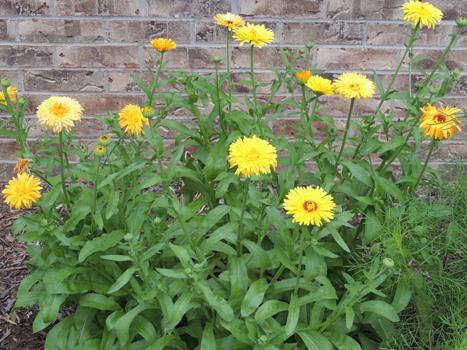
Growing Conditions and General Care
The Calendula flower or flowering herb is an annual which will readily reseed. Too much care can result in stunted or slow growth of the plants. Poor to average, well draining soil and only occasional watering after plants are established is the secret to growing prolific Calendula plants.
Like most herbs, Calendulas are adaptable and do not require a lot of maintenance. Roots will often adapt to the space provided. The amazing Pot Marigold can be grown in containers or beds in full sun to shade conditions. As the Calendulas prefer cool temperatures, flowers last longer in filtered sun or shady areas.
If deadheaded regularly, this plant can bloom from spring through fall and beyond. In warmer areas, the Calendula may take a break from blooming during summer heat and then put on a show as temperatures fall in autumn. Regular pinching keeps the 1- to 3-foot (30 to 90 cm) plant bushy and prevents tall, spindly stalks.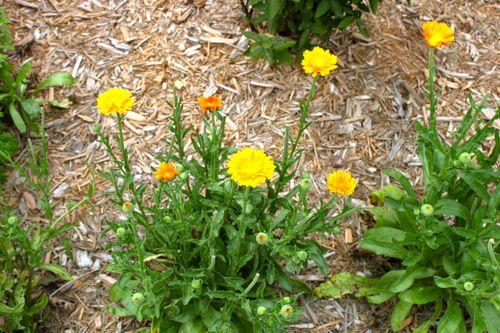
Now that you’ve learned how to grow Calendulas, take advantage of their long-lasting blooms in the herb garden or light shade area. Experiment with use of Calendula flower petals to replace saffron in recipes. If you are so inclined, use plant parts as a topical treatment for minor scrapes and cuts.

Calendulas have been used traditionally as culinary and medicinal herbs. The most commonly cultivated and used member of the genus is the Pot Marigold (Calendula officinalis). Popular herbal and cosmetic products named “Calendula” invariably derive from C. officinalis.

The Calendula flower has long been a staple in British cottage gardens. When used in stews, broths and salads, petals of the flower add a spicy taste similar to saffron to many dishes. All parts of the plants are useful in many ways. The plant is said to stimulate the immune system and is currently used as an ingredient in many cosmetics. Flowers and leaves may be dried and stored for later use. In the vegetable garden, Calendula draws aphids away from valuable plants.

Romans and Greeks used the golden Calendula in many rituals and ceremonies, sometimes wearing crowns or garlands made from the flowers. One of its nicknames is “Mary’s Gold,” referring to the flowers’ use in early Catholic events in some countries. Flowers are sacred flowers in India and have been used to decorate the statues of Hindu deities since early times.
While uses of Calendula plants are diverse, growing it in the flower or herb garden is an optimum use of this attractive plant. Plants are frost tolerant and somewhat cold hardy and add long-lasting color and beauty in a flower bed or container.

Growing Conditions and General Care
The Calendula flower or flowering herb is an annual which will readily reseed. Too much care can result in stunted or slow growth of the plants. Poor to average, well draining soil and only occasional watering after plants are established is the secret to growing prolific Calendula plants.
Like most herbs, Calendulas are adaptable and do not require a lot of maintenance. Roots will often adapt to the space provided. The amazing Pot Marigold can be grown in containers or beds in full sun to shade conditions. As the Calendulas prefer cool temperatures, flowers last longer in filtered sun or shady areas.

If deadheaded regularly, this plant can bloom from spring through fall and beyond. In warmer areas, the Calendula may take a break from blooming during summer heat and then put on a show as temperatures fall in autumn. Regular pinching keeps the 1- to 3-foot (30 to 90 cm) plant bushy and prevents tall, spindly stalks.

Now that you’ve learned how to grow Calendulas, take advantage of their long-lasting blooms in the herb garden or light shade area. Experiment with use of Calendula flower petals to replace saffron in recipes. If you are so inclined, use plant parts as a topical treatment for minor scrapes and cuts.
0
0
文章
Dummer. ゛☀
2017年09月26日

Scientific Name
Echinacea purpurea (L.) Moench

Common Names
Eastern Purple Coneflower, Purple Coneflower, Black Samson, Hedgehog Coneflower, Purple Coneflower, Purple Daisy, Snakeroot, Kansas Snakeroot, Scurvy Root, Indian Head, Comb Flower, Black Susans, Echinacée Pourpre (French), Roter Scheinsonnenhut (German), Echinacija Purpurovaja (Transliterated Russian), Röd Rudbeckia (Swedish)
Synonyms
Rudbeckia purpurea (basionym), Rudbeckia purpurea var. purpurea, Brauneria purpurea, Echinacea intermedia, Echinacea purpurea var. purpurea, Echinacea serotina, Echinacea speciosa, Helichroa purpurea
Scientific Classification
Family: Asteraceae
Tribe: Heliantheae
Genus: Echinacea

Flower
Color: Light purple and brown
Bloom Time: Spring to late summer
Description
Echinacea purpurea is a herbaceous perennial with coarsely hairy, ovate or lance-shaped leaves, up to 47 inches (1.2 m) tall and up to 10 inches (25 cm) wide at maturity. Depending on the climate, it blooms throughout spring to late summer. The solitary flower-heads are up to 4.7 inches (12 cm) across with slightly reflexed, light purple rays and brown central disk. Its individual flowers (florets) within the flower head are hermaphroditic, having both male and female organs on each flower. It is pollinated by butterflies and bees.

How to Grow and Care
Coneflowers are often listed as drought tolerant, but they will do much better with regular water. I leave the plants standing through winter, to feed the birds. Shearing them back in the spring will result in bushier plants that bloom longer into the season. Deadheading is the primary maintenance required with Coneflowers. They are prolific bloomers and keeping them deadheaded will keep them in bloom all summer. Luckily each flower remains in bloom for several weeks. Flowers start blooming from the top of the stem. As the initial flower fades, more side shoots and buds will form along the stem. Keep the plants deadheaded and you’ll keep getting more flowers.
If you don’t want to start your own seeds, there are plenty of varieties available for purchase as plants, especially through mail order. Plants can also be divided or grown from stem cuttings. Coneflower can be planted in either spring or fall. Be sure to allow for good air circulation to prevent fungal diseases.
Origin
Native to eastern North America.
Echinacea purpurea (L.) Moench

Common Names
Eastern Purple Coneflower, Purple Coneflower, Black Samson, Hedgehog Coneflower, Purple Coneflower, Purple Daisy, Snakeroot, Kansas Snakeroot, Scurvy Root, Indian Head, Comb Flower, Black Susans, Echinacée Pourpre (French), Roter Scheinsonnenhut (German), Echinacija Purpurovaja (Transliterated Russian), Röd Rudbeckia (Swedish)
Synonyms
Rudbeckia purpurea (basionym), Rudbeckia purpurea var. purpurea, Brauneria purpurea, Echinacea intermedia, Echinacea purpurea var. purpurea, Echinacea serotina, Echinacea speciosa, Helichroa purpurea
Scientific Classification
Family: Asteraceae
Tribe: Heliantheae
Genus: Echinacea

Flower
Color: Light purple and brown
Bloom Time: Spring to late summer
Description
Echinacea purpurea is a herbaceous perennial with coarsely hairy, ovate or lance-shaped leaves, up to 47 inches (1.2 m) tall and up to 10 inches (25 cm) wide at maturity. Depending on the climate, it blooms throughout spring to late summer. The solitary flower-heads are up to 4.7 inches (12 cm) across with slightly reflexed, light purple rays and brown central disk. Its individual flowers (florets) within the flower head are hermaphroditic, having both male and female organs on each flower. It is pollinated by butterflies and bees.

How to Grow and Care
Coneflowers are often listed as drought tolerant, but they will do much better with regular water. I leave the plants standing through winter, to feed the birds. Shearing them back in the spring will result in bushier plants that bloom longer into the season. Deadheading is the primary maintenance required with Coneflowers. They are prolific bloomers and keeping them deadheaded will keep them in bloom all summer. Luckily each flower remains in bloom for several weeks. Flowers start blooming from the top of the stem. As the initial flower fades, more side shoots and buds will form along the stem. Keep the plants deadheaded and you’ll keep getting more flowers.
If you don’t want to start your own seeds, there are plenty of varieties available for purchase as plants, especially through mail order. Plants can also be divided or grown from stem cuttings. Coneflower can be planted in either spring or fall. Be sure to allow for good air circulation to prevent fungal diseases.
Origin
Native to eastern North America.
0
0
文章
Dummer. ゛☀
2017年09月25日

Scientific Name
Cichorium intybus L.

Common Names
Chicory, Common Chicory, Blue Daisy, Blue Dandelion, Blue Sailors, Blue Weed, Bunk, Coffeeweed, Cornflower, Hendibeh, Horseweed, Ragged Sailors, Succory, Wild Bachelor’s Buttons, Wild Endive, Belgium Endive, Witloof
Synonyms
Cichorium balearicum, Cichorium byzantinum, Cichorium byzantinum, Cichorium caeruleum, Cichorium cicorea, Cichorium commune, Cichorium cicorea, Cichorium commune, Cichorium divaricatum, Cichorium glabratum, Cichorium glaucum, Cichorium hirsutum, Cichorium illyricum, Cichorium officinale
Scientific Classification
Family: Asteraceae
Subfamily: Cichorioideae
Tribe: Cichorieae
Subtribe: Cichoriinae
Genus: Cichorium

Flower
Color: Blue
Bloom Time: July to October
Description
Cichorium intybus is a bushy, perennial plant. The stem is a groved, tough and more or less hairy, up to 40 inches (1 m) tall. Leaves are lanceolate, stalked, and unlobed. The flowers are usually bright blue, rarely white or pink, toothed at the ends, and up to 1.6 inches (4 cm) wide. It flowers from July until October.

How to Grow and Care
Seeds can be started indoors five to six weeks before they are moved outdoors. In warm climates, sowing outdoors or transplanting occurs September through March. Planting Chicory in cooler climates should be done three to four weeks before the danger of frost has passed.
Sow Chicory seeds 6 to 10 inches (15 to 25 cm) apart in rows that are 2 to 3 feet (60 to 0) apart. You can always thin the plants if they crowd each other but close planting discourages weeds. The seeds are planted ¼ inch (6 mm) deep and thinning is done when the plants have three to four true leaves.
You can also sow a crop for fall harvest if you choose a variety that has an early maturation date. Planting Chicory seed 75 to 85 days before anticipated harvest will ensure a late crop.
Chicory plants that are to be forced for blanched leaves will need to have the roots dug up before the first frost. Cut the leaves to 1 inch (2.5 cm) and store the roots for three to seven weeks in the refrigerator before forcing. Plant the roots individually after chilling to force the leaves to grow in a tight, blanched head.
Origin
Native to Europe, and in North America and Australia.
Cichorium intybus L.

Common Names
Chicory, Common Chicory, Blue Daisy, Blue Dandelion, Blue Sailors, Blue Weed, Bunk, Coffeeweed, Cornflower, Hendibeh, Horseweed, Ragged Sailors, Succory, Wild Bachelor’s Buttons, Wild Endive, Belgium Endive, Witloof
Synonyms
Cichorium balearicum, Cichorium byzantinum, Cichorium byzantinum, Cichorium caeruleum, Cichorium cicorea, Cichorium commune, Cichorium cicorea, Cichorium commune, Cichorium divaricatum, Cichorium glabratum, Cichorium glaucum, Cichorium hirsutum, Cichorium illyricum, Cichorium officinale
Scientific Classification
Family: Asteraceae
Subfamily: Cichorioideae
Tribe: Cichorieae
Subtribe: Cichoriinae
Genus: Cichorium

Flower
Color: Blue
Bloom Time: July to October
Description
Cichorium intybus is a bushy, perennial plant. The stem is a groved, tough and more or less hairy, up to 40 inches (1 m) tall. Leaves are lanceolate, stalked, and unlobed. The flowers are usually bright blue, rarely white or pink, toothed at the ends, and up to 1.6 inches (4 cm) wide. It flowers from July until October.

How to Grow and Care
Seeds can be started indoors five to six weeks before they are moved outdoors. In warm climates, sowing outdoors or transplanting occurs September through March. Planting Chicory in cooler climates should be done three to four weeks before the danger of frost has passed.
Sow Chicory seeds 6 to 10 inches (15 to 25 cm) apart in rows that are 2 to 3 feet (60 to 0) apart. You can always thin the plants if they crowd each other but close planting discourages weeds. The seeds are planted ¼ inch (6 mm) deep and thinning is done when the plants have three to four true leaves.
You can also sow a crop for fall harvest if you choose a variety that has an early maturation date. Planting Chicory seed 75 to 85 days before anticipated harvest will ensure a late crop.
Chicory plants that are to be forced for blanched leaves will need to have the roots dug up before the first frost. Cut the leaves to 1 inch (2.5 cm) and store the roots for three to seven weeks in the refrigerator before forcing. Plant the roots individually after chilling to force the leaves to grow in a tight, blanched head.
Origin
Native to Europe, and in North America and Australia.
0
0



